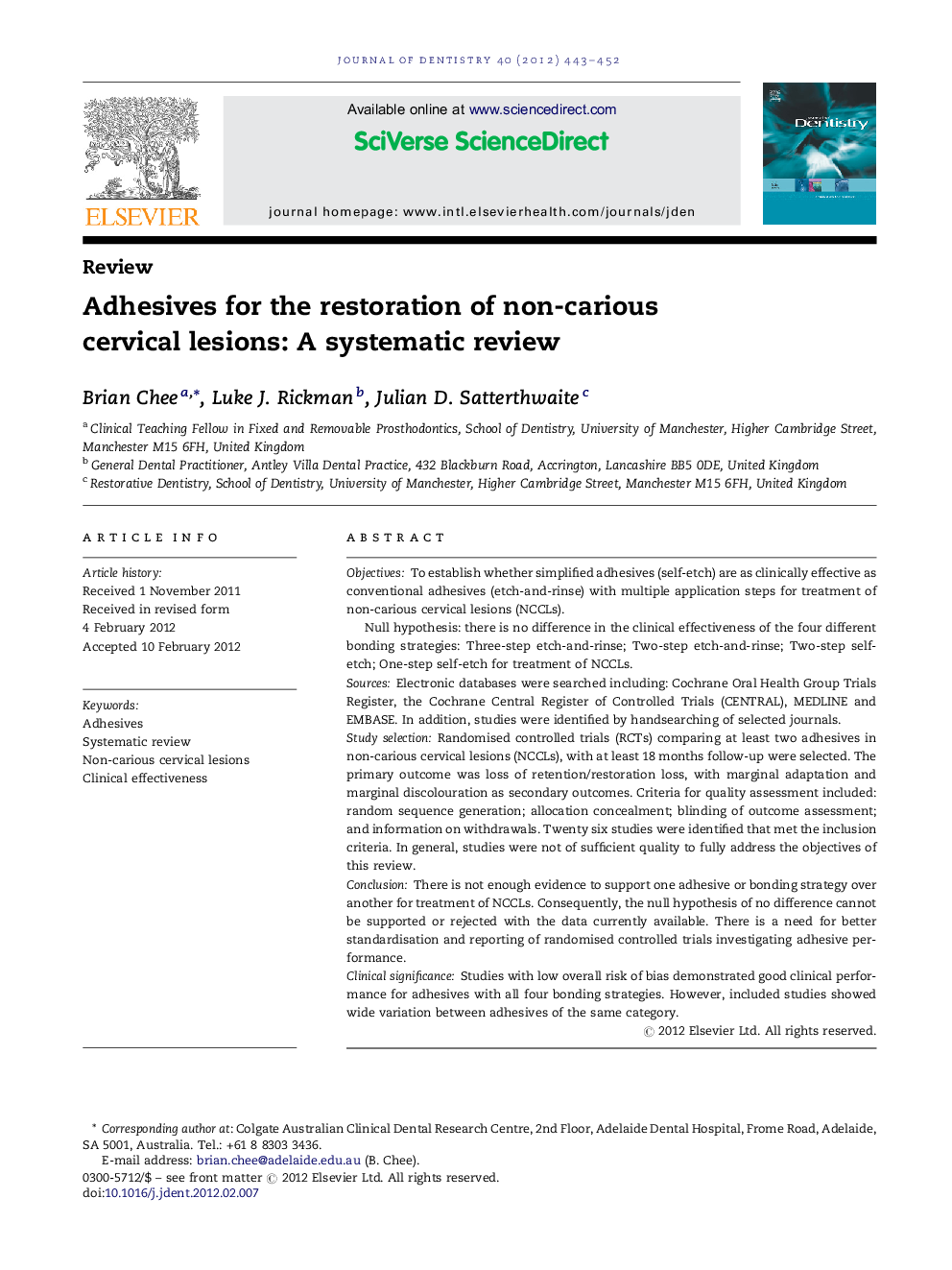| Article ID | Journal | Published Year | Pages | File Type |
|---|---|---|---|---|
| 3145182 | Journal of Dentistry | 2012 | 10 Pages |
ObjectivesTo establish whether simplified adhesives (self-etch) are as clinically effective as conventional adhesives (etch-and-rinse) with multiple application steps for treatment of non-carious cervical lesions (NCCLs).Null hypothesis: there is no difference in the clinical effectiveness of the four different bonding strategies: Three-step etch-and-rinse; Two-step etch-and-rinse; Two-step self-etch; One-step self-etch for treatment of NCCLs.SourcesElectronic databases were searched including: Cochrane Oral Health Group Trials Register, the Cochrane Central Register of Controlled Trials (CENTRAL), MEDLINE and EMBASE. In addition, studies were identified by handsearching of selected journals.Study selectionRandomised controlled trials (RCTs) comparing at least two adhesives in non-carious cervical lesions (NCCLs), with at least 18 months follow-up were selected. The primary outcome was loss of retention/restoration loss, with marginal adaptation and marginal discolouration as secondary outcomes. Criteria for quality assessment included: random sequence generation; allocation concealment; blinding of outcome assessment; and information on withdrawals. Twenty six studies were identified that met the inclusion criteria. In general, studies were not of sufficient quality to fully address the objectives of this review.ConclusionThere is not enough evidence to support one adhesive or bonding strategy over another for treatment of NCCLs. Consequently, the null hypothesis of no difference cannot be supported or rejected with the data currently available. There is a need for better standardisation and reporting of randomised controlled trials investigating adhesive performance.Clinical significanceStudies with low overall risk of bias demonstrated good clinical performance for adhesives with all four bonding strategies. However, included studies showed wide variation between adhesives of the same category.
